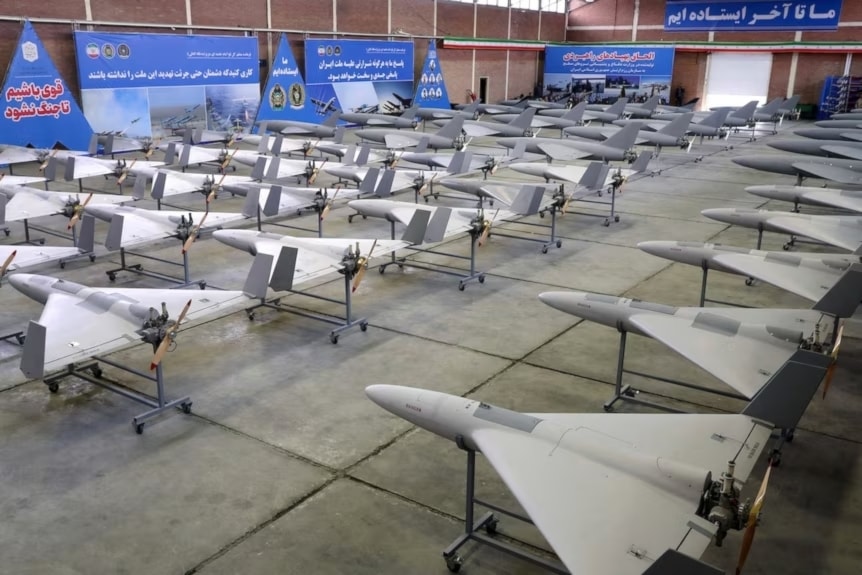A recent article from the Wall Street Journal discusses how Iran’s cost-effective and reliable drones are impacting global warfare dynamics.
Iran’s Impactful Drones
The Wall Street Journal revealed that Iran’s Shahed drones are revolutionizing traditional warfare due to their affordability and superior performance. These drones, with an estimated cost of around $20,000 each, have proven to be a formidable challenge for even the most advanced military forces worldwide, including the United States. The utilization of Shahed drones in various conflicts has showcased their capabilities, highlighting the significant financial burden they impose on well-equipped armies.
Changing Military Landscapes
The report emphasized the role of autonomous systems in reshaping military power dynamics, citing recent Yemeni drone operations in the Red and Arabian Seas and a recent attack on a US military base in Jordan as examples. The emergence of drones, particularly the Shahed models, poses a cost-effective threat to traditional symbols of power projection, such as warships.
Evolution of Warfare Tactics
The narrative delves into historical references, drawing parallels between Alexander the Great’s innovative battlefield strategies and the current deployment of drones. Just as Alexander utilized technological advancements like the sarissa spear and strategic formations to overcome formidable opponents, the effective deployment of drones is crucial in maximizing their potential impact on modern warfare.
The Rise of AI in Drone Warfare
The article forecasts a future where interconnected AI-directed drone systems will play a pivotal role in military strategies. While current defense systems can counter a limited number of drones, the prospect of AI-controlled drone swarms poses a more formidable challenge. These swarms, capable of overwhelming conventional defenses, could potentially shift the balance of power in global conflicts.
The AI Arms Race
As countries navigate the evolving landscape of warfare, the focus is shifting towards the development of superior AI systems for managing drone swarms. The report suggests that the future of military advantage lies in advanced AI-driven decision-making capabilities rather than physical platforms. This impending “brain-on-brain” conflict signifies a new era of warfare centered around AI systems, akin to the historical nuclear arms race.
In conclusion, the Wall Street Journal underscores the critical importance of AI advancements in shaping the future of warfare, highlighting the strategic significance of AI-driven drone technologies in redefining military strategies and global power dynamics.










